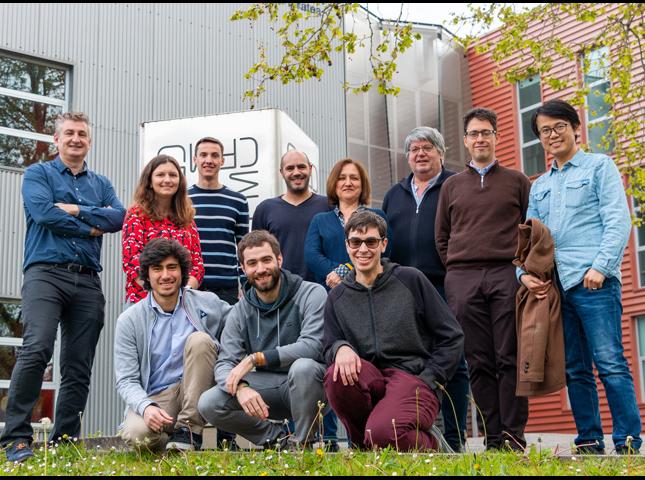Researchers
13
1
Accepted patents
0 Accepted patentsobtained during the
last 10 years
Indexed publications
135 Indexed publicationsobtained during the
last 10 years
Internal collaborations
- 23 Co-publications Nº of co-publications
in last 10 years - 1 Co-supervised postdoc Nº of co-supervised post-docs in the last 5 years
- 2 Co-supervised thesis Nº of co-supervised
thesis in last 5 years - 4 Joint project underway Nº of currently
ongoing projects - Joint projects in the past Nº of projects in last 5 years, that already finished
- Same nat or internal network Nº of collaboration networks in last 10 years
Azalpena
The Theory of Nanophoptonics Group studies the interaction of light and matter at the nanoscale.
By adopting theoretical methods of classical Electrodynamics, Condensed Matter Physics, Quantum Chemistry, and cavity-Quantum Electrodynamics, the group describes light scattering and emission from molecules and nanoscale materials in a variety of spectroscopy and microscopy configurations.
Surface-Enhanced Raman Scattering (SERS), Surface-Enhanced Infrared Absorption (SEIRA), Scanning Transmission Electron Microscopy (STEM), Scanning Tunneling Microscopy (STM), or Scattering-type Near-field Optical Microscopy (s-SNOM), are examples of the configurations addressed by the group, where different quantum dynamical aspects of light-matter interaction are identified and studied.
During the last years, the main impact of this research has been in the field of optical nanoantennas and plasmonics, and more specifically, in the role of quantum effects in the optoelectronic response of metallic nanosystems and molecular entities located within those plasmonic nanocavities.
Main researcher
Other researchers
- Ruben Esteban (Permanent researcher)
- Nerea Zabala (Permanent researcher)
- Alberto Rivacoba (Permanent researcher)
- Luca Bergamin (Postdoctoral)
- Unai Muniain (Predoctoral)
- Alvaro Nodar (Predoctoral)
- Carlos Maciel (Predoctoral)
- Mattin Urbieta (Predoctoral)
- Antton Babaze (Predoctoral)
- Fernando Aguilar (Postdoctoral)
- Mario Zapata (Postdoctoral)
- Roberto Alvarez Boto (Postdoctoral)
Contact information
Paseo Manuel Lardizabal 5 20018 San Sebastián Gipuzkoa
+34 943018830
Research center

Researchers
